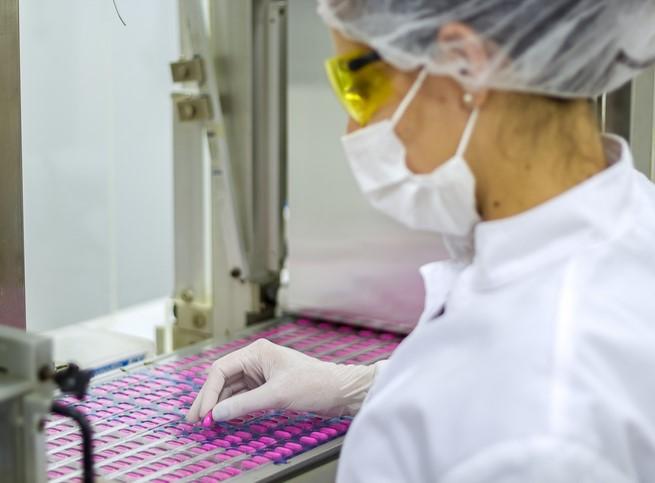A new analysis of the antibiotic pipeline indicates there aren't enough antibiotics in development to meet current and anticipated patient needs.
The analysis, published this week by the Pew Charitable Trusts' antibiotic resistance project, found that 41 new antibiotics with potential to treat serious infections are currently in various phases of clinical development, and four have been approved since June 2019. But while the antibiotics in development address many of the antibiotic-resistant pathogens that have been prioritized by the US Centers for Disease Control and Prevention and the World Health Organization (WHO), only a fraction will be approved.
"We still have too few antibiotics for the superbugs that are out there today, and the ones we can anticipate…as they continue to mutate and evade our current stock of antibiotics," said Wes Kim, PhD, MBA, senior officer with Pew's antibiotic resistance project.
Lack of novel drugs
According to the analysis, which Pew conducts annually, 15 of the antibiotics currently in clinical development are in phase 1 clinical trials, 12 are in phase 2, and 13 are in phase 3, and 1 has had a new drug application submitted to the Food and Drug Administration (FDA). At least 18 have the potential to treat difficult-to-treat infections caused by gram-negative ESKAPE pathogens (Enterococcus faecium, Staphylococcus aureus, Klebsiella pneumoniae, Acinetobacter baumannii, Pseudomonas aeruginosa, and Enterobacter species).
Gram-negative bacteria are particularly difficult targets for antibiotic development because of an additional outer membrane that protects them from many antibiotics.
In addition, thirteen have potential activity against carbapenem-resistant and extended-spectrum beta-lactamase (ESBL)-producing Enterobacteriaceae, A baumannii, and P aeruginosa. These are pathogens that the WHO has deemed critical threats because they are already resistant to multiple classes of antibiotics, and few treatments are left. Ten of the candidates target drug-resistant gonorrhea and Clostridioides difficile.
But none of the candidates for treating gram-negative ESKAPE bacteria or the WHO critical-threat pathogens are novel drugs, meaning they don't target these organisms with innovative mechanisms. Of the 41 antibiotics in the pipeline, only 10 are novel.
"With any pipeline, you want novel antibiotics, some new mechanisms of action, or a new chemical class," Kim said. "I think it's fair to say…there's an insufficient number of novel candidates."
Several of the candidates are variations on antibiotic classes that currently exist. As the WHO warned in its January report on the antibiotic pipeline, the concern is that these antibiotic candidates aren't much different from what's already out there, and that pathogens will easily develop resistance to them, using the defense mechanisms they already deploy against existing antibiotics.
"But if they see something completely new, then they need to figure out new ways to evade it, and that's why we continue to need novel antibiotics," he said.
An example of one of the candidates in the pipeline is cefepime plus enmetazobactam, which combines a beta-lactam antibiotic with an ESBL inhibitor. The combination has expected activity against ESBL-producing Enterobacteriaceae and possible activity against carbapenem-resistant Enterobacteriaceae and is currently in phase 3 trials. While the drug has produced encouraging results and could be an important new option for treating infections caused by these pathogens, beta-lactam/beta-lactamase inhibitor combinations aren't novel.
"We've seen our pipeline populated recently with more of these combinations," Kim said.
In addition, Pew notes, only one in five infectious disease drugs that reach the stage where they're tested in humans will receive FDA approval, and only 60% of the drugs that reach phase 3 trials will be approved.
Pipeline dominated by small companies
Another note of concern is that 95% of the antibiotics in development are coming from small pharmaceutical and biotech companies, and nearly 75% of these companies have no current product on the market.
Most large pharmaceutical companies have abandoned antibiotic development because new antibiotics don't sell well enough to produce a significant return on investment. Unlike drugs for chronic conditions, antibiotics are used for short periods, and new antibiotics are frequently held in reserve until older, cheaper antibiotics fail. In addition, hospital reimbursement for new antibiotics is low.
The lack of financial return for new antibiotics is an even bigger challenge for the smaller companies. Two prime examples are Achaogen and Melinta Therapeutics, both of which declared bankruptcy in 2019 because of slow sales of their newly approved antibiotics. Infectious disease and antibiotic-resistance experts say the failure of these companies is further proof of the need for changes in the way that drug-makers are reimbursed for new antibiotics.
Funding superbug preparedness
Pew says the situation is likely to remain unchanged without significant government intervention to help fix the broken antibiotic market.
Among the interventions Pew supports is the DISARM Act, a bill introduced in Congress in 2019 that would create higher Medicare reimbursement for new antibiotics, while also requiring the hospitals that receive the increased payments to use the drugs appropriately. The DISARM Act was part of an early draft of the phase 3 coronavirus stimulus bill, but was not included in the final legislation.
Kim said Pew will continue to advocate for the legislation, in combination with other incentives to fix the broken market for antibiotics. He added that the COVID-19 pandemic is highlighting why maintaining a robust antibiotic pipeline is so important.
"What we're seeing with the COVID-19 pandemic is the need for preparedness, and having the therapeutics is one pillar of the preparedness, and our concern is that, after COVID-19, if there is a pandemic for a particular superbug, we will be facing something similar to what we're facing today," he said.

























